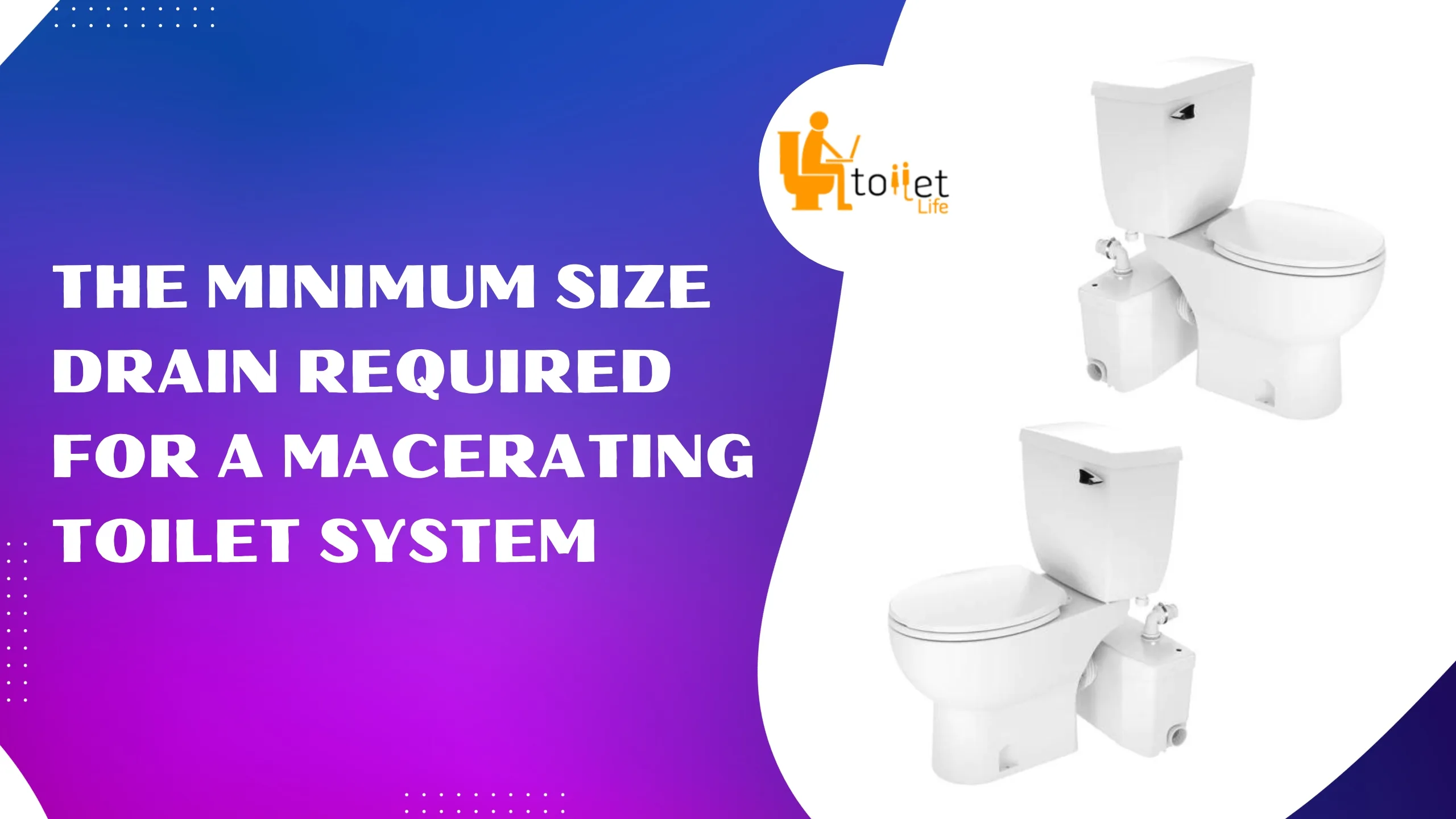The minimum size for a macerating toilet system is typically 3/4″. Macerating toilet systems allow toilets to be installed in locations where traditional plumbing setups are not feasible, such as in basements or other low-lying areas.
Macerating toilet systems differ from traditional plumbing in that they use a macerating pump to liquefy waste and toilet paper, which is then pumped out through a small drain pipe. This enables the toilet to be located further away from the main plumbing stack and allows for more flexible installation options.
When installing a macerating toilet system, it is important to ensure that the drain line is the appropriate size for the pump and that any venting requirements are met. Failure to do so can result in backups or other issues. It is recommended to consult with a professional plumber for installation of a macerating toilet system.
What Size Drain for a Macerating Toilet?
The size of the for a macerating toilet system typically depends on the specific model and brand of the macerating toilet you are using. Macerating toilets are design to handle waste by macerating or breaking it down into smaller particles before pumping it away.
In general, these systems often require a discharge pipe with a diameter of 3/4 inch to 1 inch (19 to 25 millimeters). However, it is crucial to consult the manufacturer’s specifications and installation guidelines for the specific macerating toilet model you have, as requirements can vary.
Always follow the manufacturer’s recommendations to ensure proper installation and optimal performance of the macerating toilet system. If you are unsure about the size or have specific requirements, consider reaching out to the manufacturer or a professional plumber for guidance.
Also Read: Difference Between a Macerating Toilet and Regular Toilet
What Is the Minimum Size Drain Pipe for a Toilet?
The minimum size drain pipe for a toilet is typically 3 inches in diameter. This is a standard size for residential toilets, and it is recommend to ensure effective and efficient drainage of waste and wastewater.
The larger diameter helps prevent clogs and allows for the smooth flow of water and waste through the drainage system.It’s essential to comply with local plumbing codes and regulations, as they may dictate specific requirements for drain pipe sizes.
Always refer to the manufacturer’s specifications for your specific toilet model and adhere to local building codes to ensure proper installation and functionality. If you have any doubts or questions, consulting with a licensed plumber is advisable.
Also read: Unveiling the Mystery: How Macerating Toilets Work?
What Is the Minimum Size of Discharge Piping Required on a Macerating Toilet?
The minimum size of discharge piping required for a macerating toilet can vary depending on the specific model and brand. However, a common size for the discharge pipe in macerating toilet systems is in the range of 3/4 inch to 1 inch (19 to 25 millimeters) in diameter.
It’s crucial to consult the installation manual and specifications provided by the manufacturer of your particular macerating toilet. These documents will provide precise guidelines on the minimum and maximum discharge pipe sizes, as well as other installation requirements.
Adhering to the manufacturer’s recommendations is essential to ensure the proper functioning and longevity of the macerating toilet system.
If you don’t have the manual or are unsure about the specifications, you can contact the manufacturer directly or consult with a licensed plumber who can provide guidance based on your specific macerating toilet model and local plumbing codes.
Frequently Asked Questions (FAQ) about Saniflo Toilets:
Q1. Can you poop in a Saniflo toilet?
Yes, Saniflo toilets are designe to handle all types of human waste, including solid waste. The macerator system within the toilet is capable of breaking down solid waste before pumping it away.
Q2. Saniflo full bathroom system:
Saniflo offers full bathroom systems that include macerating toilets, pumps, and other necessary components to enable the installation of a complete bathroom even in locations where traditional plumbing may be challenging.
Q3. Where does the waste go from a Saniflo toilet?
The waste from a Saniflo toilet is macerat (broken into smaller particles) and then pump through a discharge pipe. This pipe can connect to an existing sewer line or direct to a specific waste disposal location, depending on the system’s design and local regulations.
Q4. Do you need a special toilet for a macerator?
Saniflo macerator toilets are designe to work seamlessly with macerator systems. While not all toilets are compatible, Saniflo provides a range of toilets specifically designed for macerator installations.
Q5. Saniflo venting options:
Saniflo systems may require venting to ensure proper operation. Venting options include connecting the system to an existing vent stack or using an air admittance valve. The specific venting requirements can vary based on the model and local plumbing codes.
Q6. How does a macerator toilet work?
A macerator toilet utilizes a grinding or macerating unit to break down solid waste into smaller particles. These particles are then mixe with water and pump through a discharge pipe to the sewer or other waste disposal location. Macerator toilets are ideal for installations where traditional gravity-based plumbing is not feasible.
Closing Reminder:
Determining the minimum drain size for a macerating toilet system is crucial for optimal functionality. Always refer to the manufacturer’s specifications and guidelines to identify the specific requirements for your model.
Choosing the correct drain size ensures efficient waste disposal, reduces the risk of clogs, and contributes to the long-term reliability of your macerating toilet.
Consult with a professional plumber to ensure proper installation and adherence to local plumbing codes. By prioritizing the minimum drain size, you enhance the performance of your macerating toilet system, providing convenience and peace of mind for years to come.
